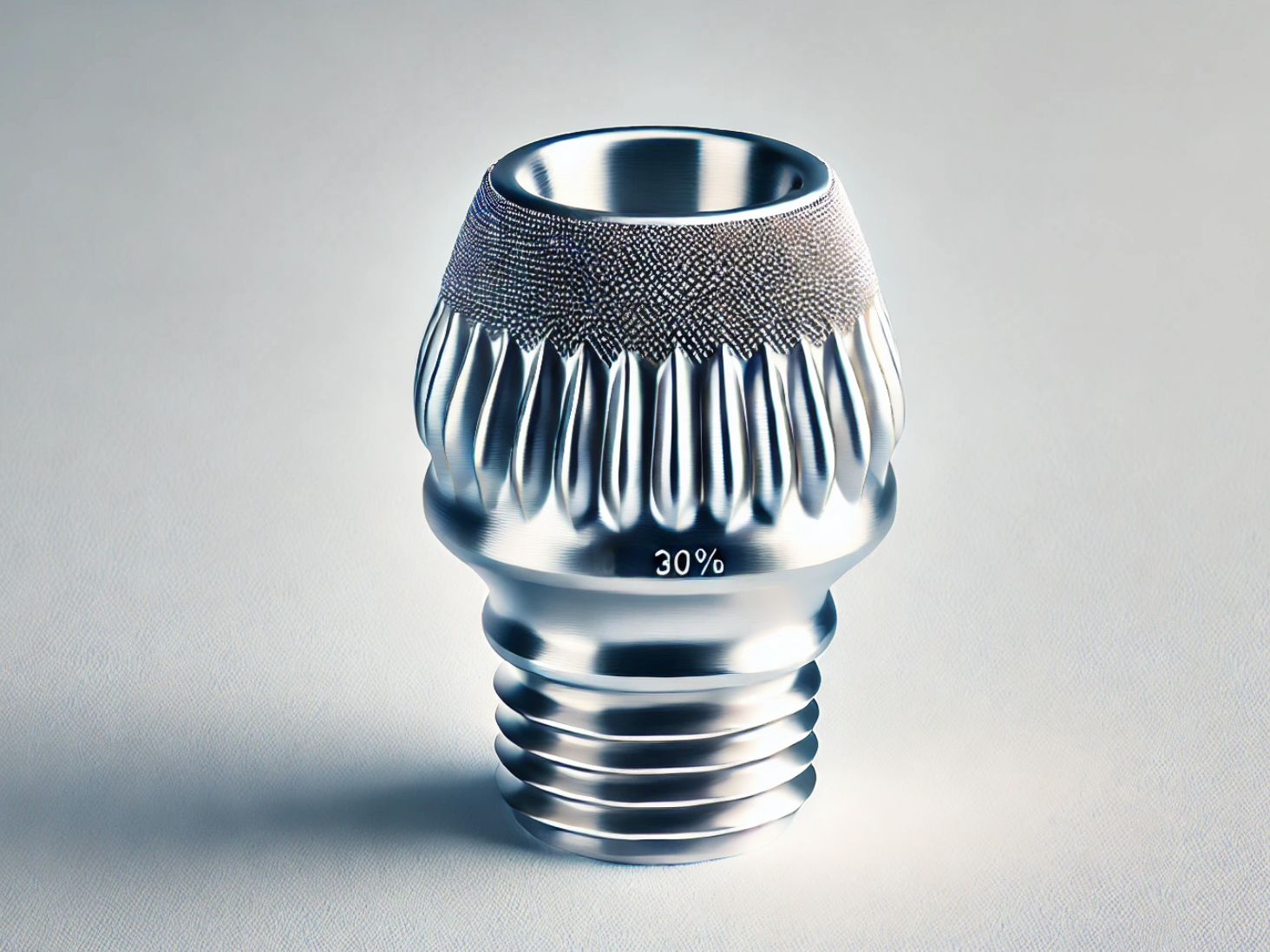Food-Grade Stainless Steel 3D Printing: Hygienic Custom Nozzles for Beverage and Dairy Processing
Introduction
Food-grade stainless steel 3D printing offers an advanced manufacturing solution for producing highly hygienic, custom-designed nozzles and fluid handling components critical to beverage and dairy processing industries. Utilizing metal 3D printing technologies such as Selective Laser Melting (SLM) and Direct Metal Laser Sintering (DMLS), food-grade stainless steels like SUS316L ensure excellent corrosion resistance, surface smoothness, and compliance with hygiene standards such as FDA and EU regulations.
Unlike conventional machining, stainless steel 3D printing for food equipment enables complex, seamless designs without welds or crevices, reducing contamination risk and simplifying cleaning processes.
Applicable Material Matrix
Material | Ultimate Tensile Strength (MPa) | Yield Strength (MPa) | Elongation (%) | Corrosion Resistance | Food Contact Suitability |
|---|---|---|---|---|---|
570 | 485 | 40% | Excellent | FDA/EU Compliant | |
520 | 220 | 55% | Very Good | FDA/EU Compliant | |
600 | 290 | 55% | Very Good | Suitable for non-acidic food processing | |
560 | 240 | 50% | Excellent | Food and beverage applications | |
1000 | 880 | 15% | Good | Suitable for non-contact structural components | |
1100 | 1000 | 10% | Good | Non-contact support structures |
Material Selection Guide
SUS316L: With excellent resistance to acidic, salty, and chlorinated cleaning agents, and meeting FDA and EU food-contact standards, SUS316L is the gold standard for hygienic nozzles and fluid contact parts in dairy and beverage systems.
SUS304L: Offers good corrosion resistance and excellent formability, suitable for hygienic piping, valve bodies, and low-acidity product handling.
SUS304: Ideal for food-grade applications where lower acid exposure is expected; widely used for standard dairy and beverage fittings.
SUS316: Similar corrosion resistance to SUS316L, making it suitable for food mixing tanks, transfer nozzles, and high-moisture environments.
SUS15-5PH: Preferred for structural frames and mounting elements in food processing machinery where direct food contact is not required.
SUS630/17-4PH: Applied to high-strength support components and housings surrounding critical sanitary piping and nozzle systems.
Process Performance Matrix
Attribute | Stainless Steel 3D Printing Performance |
|---|---|
Dimensional Accuracy | ±0.05 mm |
Density | >99.5% Theoretical Density |
Layer Thickness | 20–60 μm |
Surface Roughness (As-Printed) | Ra 5–15 μm |
Minimum Feature Size | 0.3–0.5 mm |
Process Selection Guide
Hygienic Design Optimization: 3D printing eliminates crevices, weld joints, and surface irregularities, minimizing bacterial traps and making cleaning easier.
Superior Corrosion Resistance: Materials like SUS316L resist corrosion from CIP (Clean-In-Place) chemical agents, protecting product purity and equipment longevity.
Custom Flow Dynamics: Complex internal geometries, such as optimized nozzle spray patterns and smooth flow channels, can be created directly without assembly.
Rapid Customization: Fast prototyping and small-batch production of nozzle variants tailored for specific beverage or dairy processing lines.
Case In-Depth Analysis: SUS316L 3D Printed Custom Beverage Nozzles
A beverage bottling plant required custom nozzles optimized for a high-speed, low-foam fill process. Using our stainless steel 3D printing service with SUS316L, we produced nozzles achieving tensile strength of 570 MPa, elongation of 40%, and exceptional surface finish after electropolishing. The 3D printed designs integrated internal flow channels to minimize turbulence, reducing foam generation by 25% and increasing bottling efficiency by 15%. Post-processing included passivation to enhance corrosion resistance and comply with food-contact hygiene standards.
Industry Applications
Beverage Processing
Custom beverage filling nozzles for carbonated and non-carbonated drinks.
Spray heads for CIP (Clean-In-Place) sanitation systems.
Optimized flow fittings for bottling and packaging lines.
Dairy Processing
Hygienic nozzles for milk, yogurt, and whey handling.
Valve components for sterile dairy transfer systems.
Custom fittings for UHT and pasteurization systems.
Food Processing Machinery
Nozzle assemblies for sauces, creams, and semi-liquid products.
Sanitary spray bars and rinsing systems.
High-precision dosing and dispensing equipment.
Mainstream 3D Printing Technology Types for Stainless Steel Food Equipment Parts
Selective Laser Melting (SLM): Best suited for dense, high-precision stainless steel hygienic parts.
Direct Metal Laser Sintering (DMLS): Ideal for complex nozzle geometries with integrated flow optimization.
Binder Jetting: Effective for cost-effective batch production of non-critical stainless steel food components.
FAQs
Which stainless steel grades best suit 3D printed food and beverage nozzles?
How does stainless steel 3D printing improve hygienic design for food processing equipment?
What surface treatments ensure food-contact safety for 3D printed stainless steel parts?
Can complex nozzle designs be directly printed to improve fluid dynamics?
How does stainless steel 3D printing accelerate product development for food processing lines?

